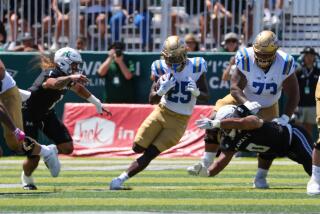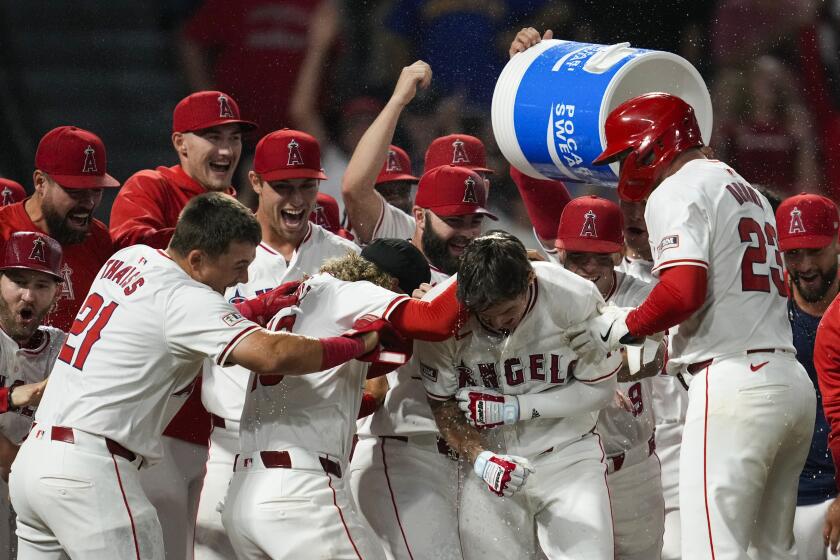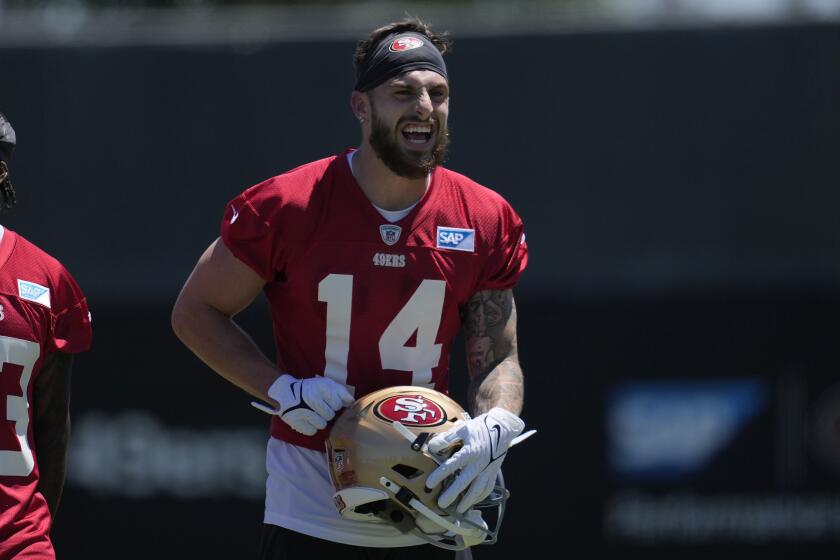Verplank Knows What Mickelson Faces
Scott Verplank has been where Phil Mickelson has been. He has been the guy with the “a-” next to his name who turned up on top of a PGA tournament field as the sun set on a Sunday evening. He has experienced the ballyhoo.
No, it does not go unnoticed when an amateur, no matter how good an amateur, wins a professional golf tournament. It takes golf out of the small type in every newspaper on the continent, and maybe elsewhere.
Jack Nicklaus, for example, never won a professional tournament as an amateur.
Three PGA Tour events have been won by such intruders, who are supposed to behave themselves as they would at a formal party. Stay out of the way and keep quiet. Just be sure your shoes and socks match and hit when the pros say you’re away, which is supposed to be most of the time.
Gene Littler was the first to crash this party. He did it right here in 1954, when the San Diego Open was the San Diego Open. The tournament had not at that point put on its eyelashes and short skirt and gone looking for a sugar daddy.
Ten years after that, Scott Verplank was born. At the age of 21, give or take a few days, Verplank did what Littler had done. He won as an amateur, beating Jim Thorpe in a one-hole playoff to win the 1985 Western Open. This was a particularly auspicious feat because the Western Open, having been won by the likes of Hagen, Sarazen, Nelson, Demaret, Hogan, Snead, Palmer and Nicklaus, was and is one of the most prestigious non-majors on the tour.
Much was made of Verplank’s victory, what with 31 years having elapsed since Littler’s success back before woods became metal.
Darned if amateurs are not starting to make a habit of this. Along comes 20-year-old Mickelson a few weeks ago, winning the Tucson Open.
Much has been made of Mickelson’s victory, particularly here in his hometown. Veterans Fred Couples and Tom Purtzer, his partners for the first two rounds of the Shearson Lehman Brothers Open, met Mickelson’s Militants in Thursday’s first round. The Kid had the largest gallery on the course.
Meanwhile, Verplank was out on the greensward simply trying to make a living. He won the U.S. Amateur in 1984, the Western Open in 1985 and the NCAA Championship in 1986 before turning pro in the summer of 1986.
What must now be noted is that there are amazing parallels between Messrs. Verplank and Mickelson. You see, Mickelson also has a U.S. Amateur championship and two NCAA Championships in his bag, as well as that Tucson victory.
“I was talking to my caddy about that,” Verplank said one day this week as he stood on the putting green. “Basically, our records are pretty similar, but I think he’s kinda done things a year younger than I did.”
But they have done those same things.
And Mickelson seems determined to do the same thing at Arizona State that Verplank did at Oklahoma State, which is finish school before turning professional.
You listen to Verplank explain why he finished and it sounds like an echo of Mickelson explaining why he finished, though maybe it should be the other way around.
“I had one year of school left,” Verplank said, “and I was going to graduate on time. I had good grades and I had committed myself to graduating in four years. I wanted to do that. That was my goal.”
And so he did.
And so what would he recommend that Mr. Mickelson do?
“It’s a very individual situation,” he said. “My advice is that if he wants to be the best player he can possibly be, he should get out of college because he’s just not going to have the competition it takes to raise the level of his golf.”
But . . .
“On the other hand,” Verplank smiled, “how can you fault a kid who wants to stay in school? If he’s enjoying school and having fun, like I did, you couldn’t blame him for staying. You’re only there once and it’s a lot tougher when you get out.”
It is a vicious world on the PGA Tour. Scott Verplank can tell him that. He had to go back to qualifying school after his first two years on the tour, made it through and then won for the first time as a professional at the Buick Open in 1988. He has had very good years in 1988 ($303,589) and 1990 ($366,045), but down years in between. He has yet to make the cut in three tournaments this year.
Any other thoughts on this young man marching along in his footsteps?
“He has a lot of great things ahead of him,” he said. “He’s obviously a good player, but the whole thing is contingent on the attitude and approach he has. He might be one of the best players for years to come . . . and he might not.”
Has he conversed with Phil Mickelson?
“Not really,” he said. “Just congratulations after he won. I told him I was pulling for him.”
You know how those party crashers have to stick together.
More to Read
Go beyond the scoreboard
Get the latest on L.A.'s teams in the daily Sports Report newsletter.
You may occasionally receive promotional content from the Los Angeles Times.






